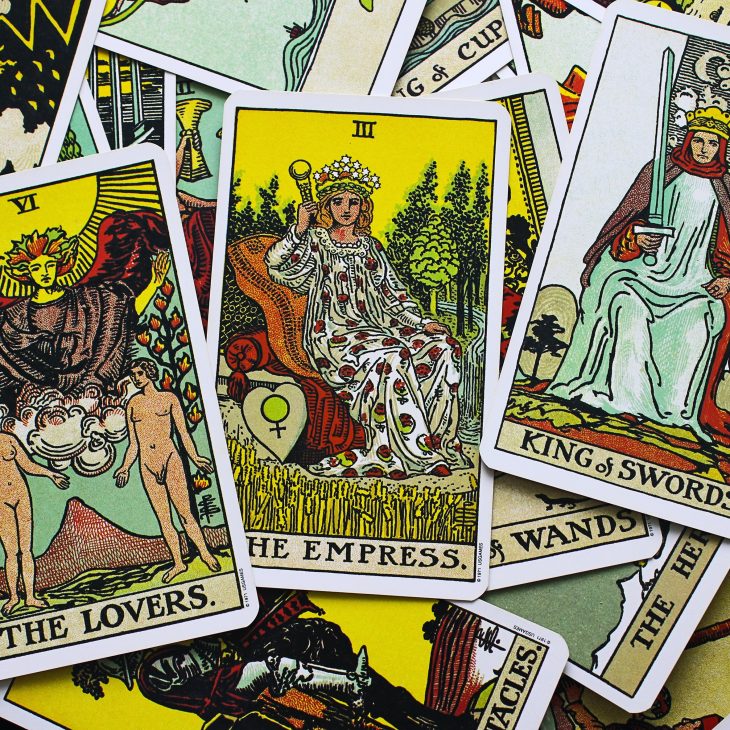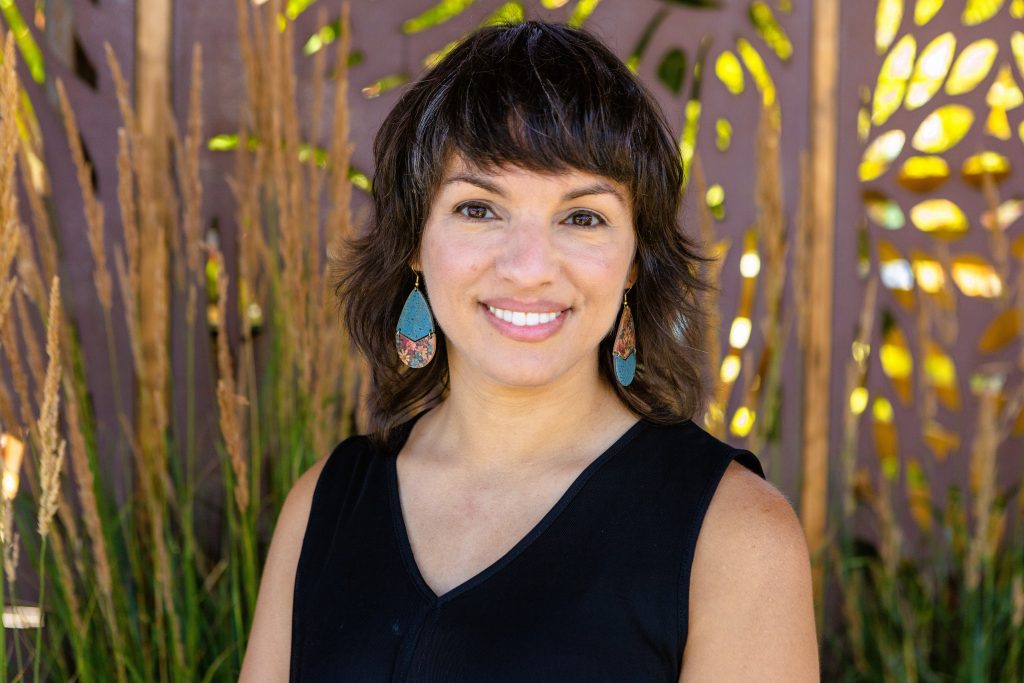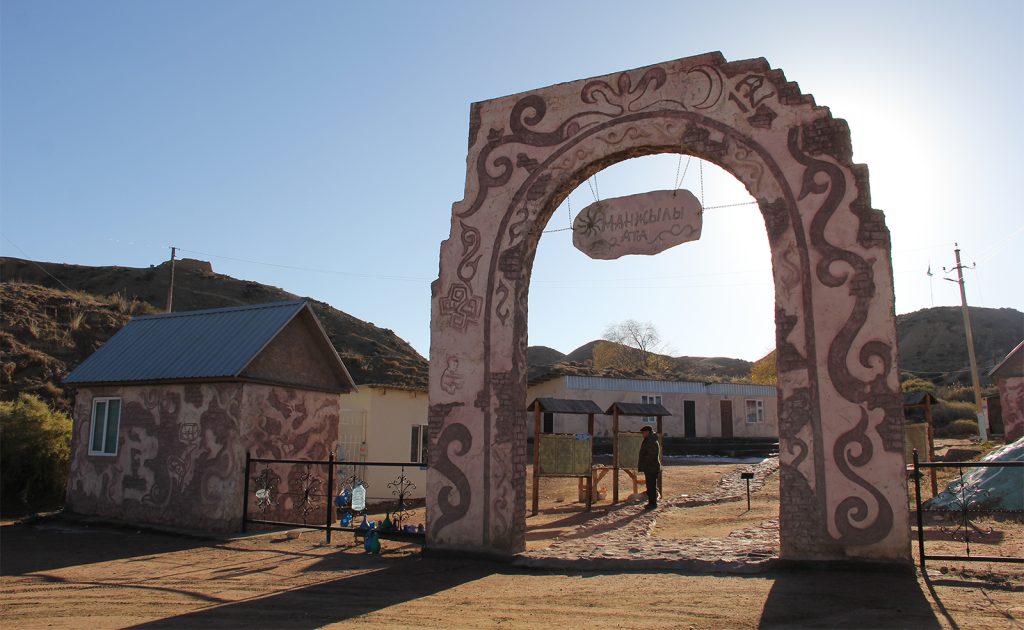Tarot Booms As Generation Z Sorts Out Spiritual Path
April 28, 2021

(RNS) — Jenna Cargle was first introduced to tarot by her mother, a Catholic. “She was always talking about herbs, crystals, astrology and tarot,” explained the 18-year-old Atlantan.
Her mother’s mix of beliefs wouldn’t have attracted attention in many households, where tarot is akin to divination fads such as throwing I Ching or playing with a Ouija board. Not in Cargle’s family, some of whom rejected tarot and other practices as evil. Cargle herself was reluctant to embrace the practice.
Then, when she was 16, said Cargle, “I got comfortable with myself, Catholicism and spirituality. … I was no longer afraid to touch a tarot deck.” Cargle, who now identifies as spiritual but not religious, sees tarot as a tool.
“I’m a strong believer that everything happens for a reason and that there is a set path for everyone. But there are different (possible) endings.” The tarot can help predict those endings, she explained.
Cargle is not alone in her spiritual discovery. Generation Z has been the driving force behind the renewed popularity and mainstreaming of the age-old esoteric system.
As Theresa Reed, known online as The Tarot Lady, put it, “It’s not just for witches anymore.”
Reed, who has been a tarot professional for 30 years, said that the crop of young readers haS demanded “a much needed upgrade,” explaining that their interest has provoked new “inclusive decks and better representation.”
Based on a mix of European Renaissance esoterica and religious symbolism, tarot was first popularized by spiritualists in the 1800s but then found its mainstream American audience in the 1960s. Since that point, tarot has enjoyed occasional bouts of trendiness. Most recently, sales of tarot decks increased 30% in both 2016 and 2017, according to The New York Times, the biggest bump since the mid-1960s, part of a wider increase in occult and New Age practices.
Tarot and divination can still run afoul of religious people — in 2014, an attempt to retire a law banning “magic arts” in the rural town of Front Royal, Virginia, was met with unexpected backlash from those defending Christian values. But tarot isn’t necessarily a reflection of the decline in the religiously affiliated: according to Pew Research Center, alternative beliefs are popular among even evangelical Christians.
Reed agreed that the stigma of reading tarot is dying down, making it easier for readers of all faiths or none to practice: “Today you’ll see people from all belief systems using tarot.”
Reed believes that the most recent surge is specifically being led by young Black tarot readers and those in the LGBTQ community. “That’s a good thing. Welcome. Welcome. Welcome. We’ve been waiting for you,” Reed said.
Whatever its source, the trend has likely been intensified by the pandemic. “I believe due to social media growing and (now) all of us being quarantined, the word on tarot has spread quickly,” said Cargle, who said she reads for friends as well as herself.
Barbara Moore, an acquisitions editor at Llewellyn Worldwide, one of the leading publishers and distributors of decks, agreed that there is a noticeable upswing in interest. Moore said that Llewellyn is now publishing six new decks per year, which is double from a few years back. “We are (specifically) seeing a demand for more diversity in tarot decks,” she said.
“While the pandemic has definitely been a major factor for the current surge, there are other forces at play,” explained Moore, including digital media and self-publishing.
“Independent venues and crowdfunding have opened up a whole new world of tarot and oracles. Because these options are not under the same sales requirements as a traditional publisher, it is a way for more specialized, unique, or experimental decks to come to life,” she said.
The Simplicity Tarot, an inclusive deck created by New York City-based reader and spiritualist Emilie Muñiz, was crowdfunded and was so popular that she created a second “Red Rose” edition. Muñiz has since contracted with U.S. Game Systems for mass printing.
A related form of divination called oracle decks has also been gaining popularity, specifically with younger readers. Moore explained that oracles are a good resource for people looking for daily comfort without having to spend time memorizing tarot’s esoteric system. They are particularly attractive to young people just beginning a spiritual journey, she added.
The growing interest in both types of decks has forced an Atlanta-based metaphysical store, Phoenix and Dragon, to completely rearrange its space. The tarot display, which now holds well over 128 decks and 60 kits, was moved to a larger room near the store’s front.
Owner Candace Apple said, “The surge in sales is definitely fueled by the 18- to 25-year-olds searching for their spiritual path and answers to the challenges they are facing in an uncertain world.”
Although her most popular deck is still the century-old Rider-Waite-Smith, Apple said, “The popular new aesthetics (in deck theme and art) reflect more forward movement than nostalgia of the past.”
Like Cargle, Apple names social media as the main factor behind the surge. “My book and deck buyer, Preston, scans the related TikTok posts to determine the strength in the newly introduced decks.”
Platforms like TikTok, YouTube and Instagram are the most common places for young readers to discuss and share their practice. All three are visually oriented and therefore conducive to tarot.
For all of social media’s power, however, tarot’s pull still has much to do with its aesthetic, which has expanded over the centuries from traditional esoteric depictions to Manga and pop culture. Even in its most modern form, tarot still holds its fundamental imaginative power. Cargle began reading with Vanessa Decort’s Sun and Moon Tarot deck, which was a gift from her mother. But she has since moved to Tarot of the Divine, attracted by the art of creator Yoshi Yoshitani, which, Cargle said, helps her to intuit what the cards are saying.
Share
Related Articles
American Civic Life
If Faith Leaders Want to Reach Gen Z, Meet Them in the Streets
American Civic Life
The Interfaith Legacy of Muhammad Ali: “The Wise Man Changes”
Higher Education
Gen Z-ers Turn Away from “Me” and Choose “We” Across the Carolinas



